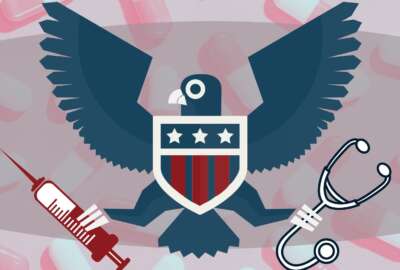

Open Season will come to a close on Dec. 12, but typically a very small number of FEHB enrollees make changes to their health enrollments. Federal health policy...
Participants in the Federal Employees Health Benefits Program have just a few days left before their health insurance selections will be set for the next year.
The open season deadline is looming, but federal health insurance experts said it’s not too late to make changes — even if you haven’t done anything yet.
“You can do what you need to do in less than an hour. The simplest and most important thing to do is think about the medical situation of you and your family,” said Walton Francis, a health policy analyst and author of the annual Consumers’ Checkbook guide to health plans for federal employees and retirees.
The “Checkbook” guide is one of many tools available to help participants figure out what will match their needs best. Along with that online resource, the Office of Personnel Management’s website offers overall FEHB information, as well as a plan comparison tool, a list of frequently asked questions about the program, along with much more. These resources let FEHB enrollees take a closer look at cost savings and compare coverages for 2023.
OPM has said it’s especially important this year to be active during open season this year, as FEHB participants will pay an average of 8.7% more toward their premiums in 2023. It’s the highest year-to-year increase in over a decade.
“This is a big premium increase that’s going to impact almost all federal employees and retirees. However, it’s not uniform. In fact, they’re actually 56 plans next year where the premiums going down, nine plans where the premium’s staying the same. And then 119 plans where the premium is going up, but below that 8.7% average. And then 78 plans where it’s above that average,” Kevin Moss, director of marketing for the Consumers’ Checkbook, told the Federal Drive with Tom Temin.
Each year, only a small minority of FEHB enrollees make changes during open season. During last year’s open season, for example, 2.5% of enrollees changed their health coverage and just 0.6% switched insurance carriers.
Even if participants want to stay within the same insurance carrier, there are still a few items they can check off on their open season to-do list. Many health insurance carriers, including GEHA, Blue Cross and Blue Shield, UnitedHealthcare and plenty of others in FEHB offer multiple types of plans. Regardless of a participant’s final decision, it’s always worth taking a look.
“Even if you don’t think that you want to switch your health plan this year, your premium has changed. And I think most people don’t want to be surprised in 2023. So you have to check to see how your premium is changing,” Moss said.
And those who don’t want to make changes at all, despite the savings it could offer, should still take a look as well, as their coverages might be changing next year. The FEHB plan brochures on OPM’s website lay out all the notable benefit changes for 2023.
“There’s a page in every brochure, in section two, that details how the plan changes for next year. Turn to it and just run your eye down that list to make sure there’s no bad news on that list of changes,” Francis said. “You could search the brochure of any health plan, including the one you’re in. You can download it from the Checkbook website, the OPM website or the plan’s website. And you can look up diabetes, maternity or whatever else may be important to your family’s health.”
There are some specific situations, too, that may require an extra look at what’s on the table, before open season comes to a close. For instance, two-person families should consider a self-plus-one option from one of the many carriers in FEHB, according to Moss. For 2023, there are 86 plans where the “self and family” option is the least expensive.
Retired FEHB enrollees have specific considerations during open season as well. A shift in FEHB over the last couple of years has yielded more options for Medicare Advantage plans, which cover most or all of the premium costs of Medicare Part B for enrollees. One area that federal retirees should focus on particularly is to see how Medicare Advantage plans will handle the cost of prescription drugs. Regardless, these plans can lead to thousands of dollars in cost savings for retirees.
“Even [if the plan doesn’t cover prescription drug costs], the benefit will be better than what you get in an FEHB plan,” Francis said.
Current federal employees should consider whether a high-deductible plan with a health savings account (HSA) is right for them. HSAs are tax-free investments that roll over, year after year, and can be put toward health costs, even years down the road. Francis said there are some cases of enrollees who have HSAs with tens of thousands of dollars, after contributing to the accounts over a long period of time.
“If you have more flexibility and can save even more, then the health savings account is a great additional choice,” Francis said.
But if an HSA isn’t the right choice for an individual, there’s also the Federal Flexible Spending Account Program, nicknamed FSAFEDS, that offers flexible spending accounts to active federal employees. Those accounts have to be renewed each year, meaning enrollees must opt into FSAFEDS each year to receive the benefit.
“A flexible spending account gives you a tax preference, which saves about a third of what you spend, for example, on co-pays for doctors’ visits in most plans,” Francis said.
Despite the cost savings that it can yield, fewer than a fourth of federal employees take advantage of the program. In 2022, less than 20% of eligible federal employees used FSAFEDS.
The last day of open season, when FEHB enrollees can make changes to their health enrollments for 2023, is Monday, Dec. 12.
Copyright © 2025 Federal News Network. All rights reserved. This website is not intended for users located within the European Economic Area.
Drew Friedman is a workforce, pay and benefits reporter for Federal News Network.
Follow @dfriedmanWFED


